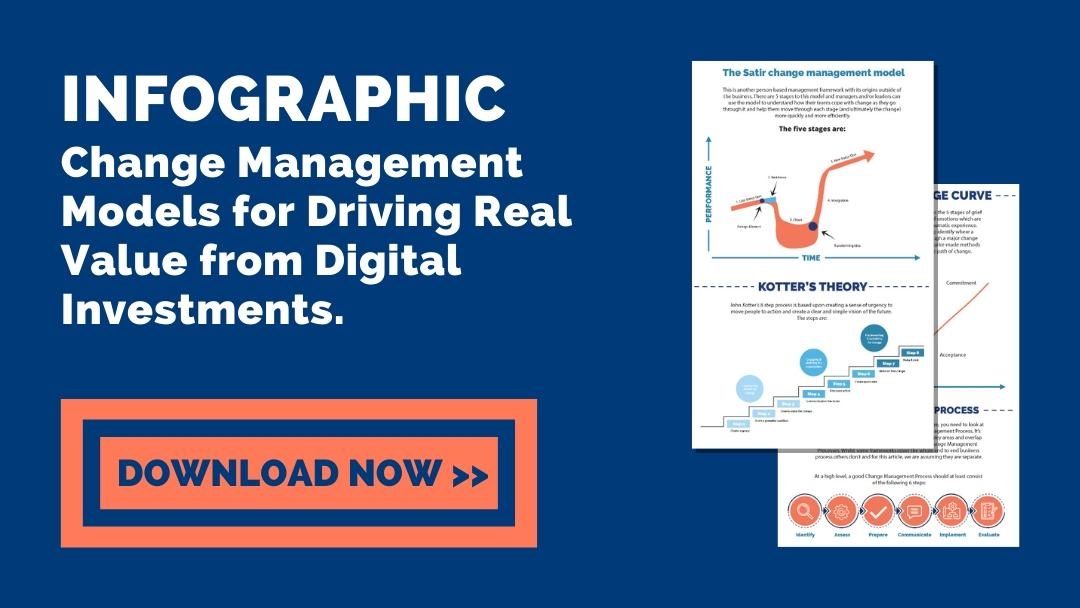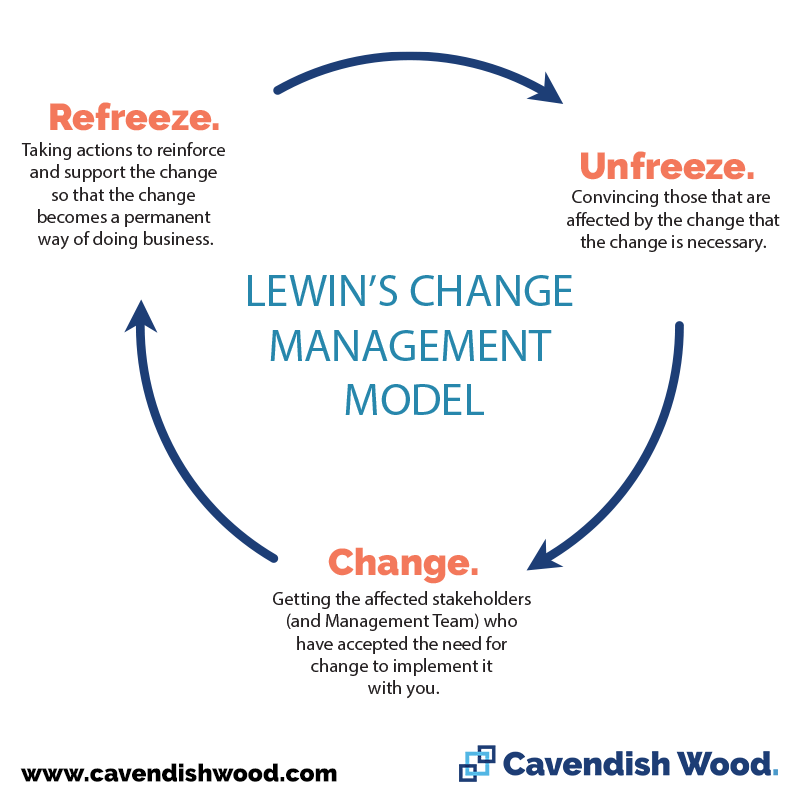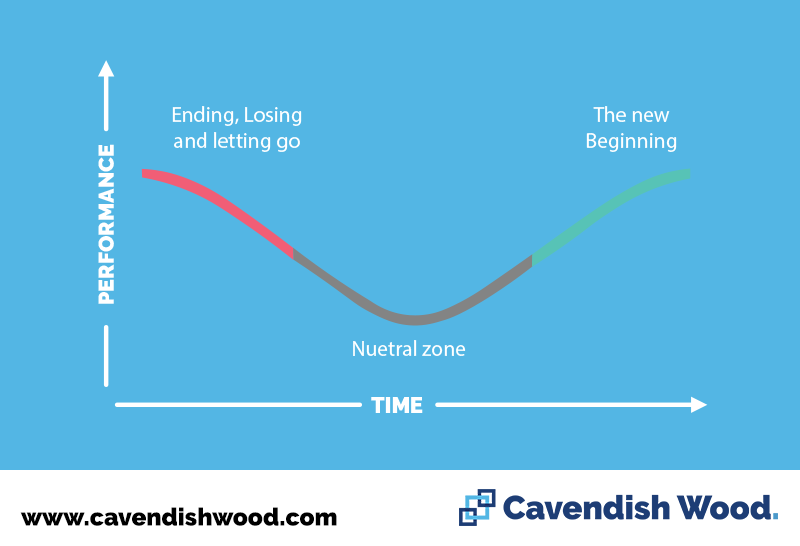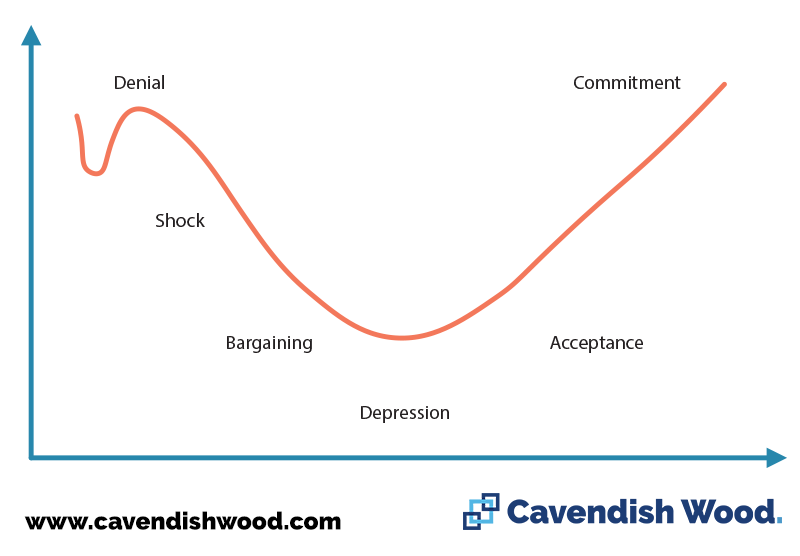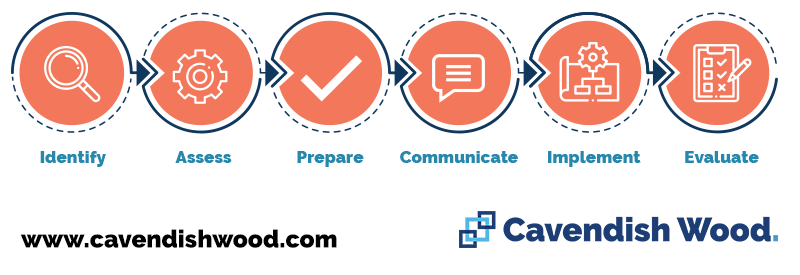
These days you can’t read an article about Digital Transformation without being told that 70% of them fail. Whilst this may be a good headline it doesn’t tell you the true picture or give you the understanding of why some of these may fail.
There are many things that contribute to the demise of a transformation programme. On its own they are a very hard thing to complete successfully, start throwing into the mix people, legacy systems, existing day jobs, budgets etc. and it becomes exponentially difficult.
To help keep your programme on an even keel driving real value from digital investments, and to navigate it through the muddy waters of day to day business, a solid Change Management Framework and broader Change Management Process needs to be in place.
In this post we explain the main options you should have up your sleeve.
What is a Change Management Framework?
A Change Management Framework is a systematic approach to managing changes within the business, whether that’s organisational change management, transformational, personnel, unplanned or remedial change. Choosing the right framework is vital for success and has many benefits, such as:
- Identify and prevent problems (risks) before they start
- Provide a way to deal with and mitigate issues as and when they occur
- Help employees buy into a new change and minimise employee resistance
- Ensure continuity of service
Things to consider when selecting a Framework.
There are lots of Change Management Frameworks that can be used, each with their own pros and cons and some are more suited to certain ‘types’ of change than others.

Choosing the right one for your organisation is key and you should follow a rigorous process to make sure you select the appropriate one for you. Some key points to bear in mind are:
Flexibility.
No framework will fit 100% with what you are looking for, you need to choose something that covers 80% of things you need but can flexibly be tweaked to fit the remainder.
People Friendly.
Implementing something that is onerous and process heavy will lead people to be disillusioned and despondent.
Change Management is not Project Management.
Change Management should be viewed as a capability of an organisation, part of its ability to respond quickly to new opportunities & challenges and help with its continuous improvement. A good Change Management Framework will work and complement your existing project management methodology.
Target Operating Model.
Whilst a particular framework fits for the way you work now, will it still be relevant for the new departments, procedures, processes you are looking to move towards?
What frameworks are there?
New or variations of existing frameworks continually pop up, some of this is down to natural evolution and some are brought to life to support new ways of working. However, here is a selection of the most common frameworks that have stood the test of time alongside some key points about when to use them:
Lewin’s change management model.
Lewin’s change model focuses on behaviour modification of people/ employees. The model is fairly simple to adopt and focusses on three key stages:
Unfreeze.
Convincing those that are affected by the change that the change is necessary.
Change.
Getting the affected stakeholders (and Management Team) who have accepted the need for change to implement it with you.
Refreeze.
Taking actions to reinforce and support the change so that the change becomes a permanent way of doing business.
The McKinsey 7-S model.
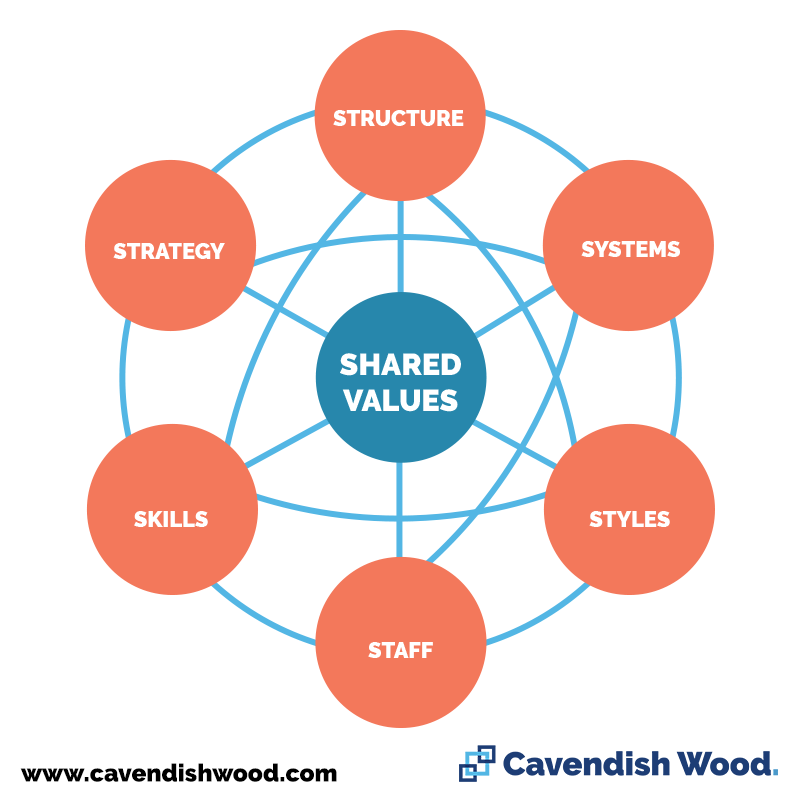
The model helps companies better understand its current operating model, identify its long-term goals, then look at what needs to change and why. It looks at 7 key internal elements; Hard elements such as; Strategy, Structure & Systems and Soft elements such as; Shared values, Style, Staff and Skills. The most common uses of the framework are:
- To facilitate organizational change
- To help implement a new strategy
- To identify how each area may change in a future
- To facilitate the merger of organizations
Kotter’s theory.
John Kotter's 8 step process is based upon creating a sense of urgency to move people to action and create a clear and simple vision of the future. The steps are:
- Create Urgency
- Form a Powerful Coalition
- Create a Vision for Change
- Communicate the Vision
- Remove Obstacles
- Create Short-Term Wins
- Build on the Change
- Anchor the Changes in Corporate Culture
Nudge theory.
Nudge theory is a flexible and modern Change Management concept for understanding how people think, make decisions, and behave; helping people improve their thinking and decisions; managing change of all sorts and; identifying and modifying existing unhelpful influences on people.
It works on the principle that instead of promoting/enforcing big bang changes to people, you can offer small subtle changes so that people start to make changes in their behaviour themselves which lessens any potential resistant to change.
ADKAR.
The ADKAR model is a Change Management model to help identify why change is difficult and why some changes succeed while others are unsuccessful, it is built on five building blocks:
Awareness.
Team members must be made aware of the need for change.
Desire.
Team members must have the desire to participate and fully support the change
Knowledge.
By gathering knowledge about the change process the (ultimate) goal of the change will become clear for the employees.
Ability.
Because of the ability to learn new skills and by managing behaviour, change is accepted.
Reinforcement.
Reinforcement to sustain the change makes it clear for all employees that there is no turning back.
Bridges’ transition model.
This model is more people orientated and focuses on transition, not change. Whilst there is a subtle difference between the two terms it is important - change is something that happens to people, even if they don't agree with it. Whereas, a transition is what happens in people's minds as they go through change. Change can happen very quickly, while transition usually occurs more slowly.
The model highlights three stages of transition people work through when change happens:
Ending, Losing, and Letting Go.
The stage where people are resistant, uncertain & fearful of the change.
The Neutral Zone.
The stage where resentment & scepticism about the change, sets in and affects morale and productivity.
The New Beginning.
The stage at which people begin to accept and embrace the change. Productivity returns as does openness to learning.
Bridges’ theory is that team members will go through each stage at their own pace. For example, those who are comfortable with the change will likely move ahead to stage three quickly, while others will linger at stages one or two.
Kübler-Ross’ change curve.
The Kubler-Ross Change Curve which is also known as the 5 stages of grief is a model consisting of the various levels or stages of emotions which are experienced by a person who is going through a traumatic experience. However, it is also used within the business to help identify where a person is and how they will react whilst going through a major change/transformation. This can help managers in creating tailor-made methods of communication and guidance for those on the path of change.
The five stages are:
Denial.
Disbelief, looking for evidence to support their theory that the change won’t work.
Frustration.
Annoyance & recognition that things are going to be different.
Depression.
Employees will have a low mood and morale.
Experiment.
Acceptance of change and initial experimentation with new ways of working.
Decision.
Employees are bought into the change and looking at the positives.
The Satir change management model.
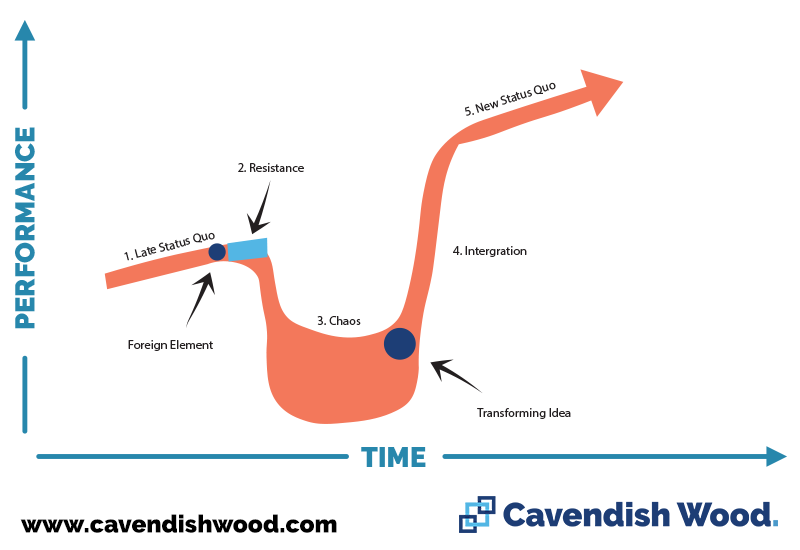
This is another person-based management framework with its origins outside of the business. There are 5 stages to this model and managers and/or leaders can use the model to understand how their teams cope with change as they go through it and help them move through each stage (and ultimately the change) more quickly and more efficiently.
The five stages are:
Late Status Quo.
The final stages employees are in before they become aware of the change
Resistance.
The first stage employees go through when they are aware of the change and the break from the norm.
Chaos.
Employees will enter this stage as the change is taking place. Morale & productivity will be low.
Integration.
Buy-in and a realisation that the change can be a force for good.
New Status Quo.
The new working practices have become embedded in day to day use and the new skills are in use.
Change Management Process.
Once you have agreed on a change framework(s) to use, you need to look at how this fits into a wider, more detailed Change Management Process. It’s worth noting at this point that there is often a lot of grey areas and overlap between Change Management Frameworks and Change Management Processes. Whilst some frameworks cover the whole end to end business process others don’t and for this article, we are assuming they are separate.
At a high level, a good Change Management Process should at least consist of the following six steps:
Identify.
The first step is to identify what needs to change and why. This could be as a result of new opportunities technology could bring, threats from a disruption in your marketplace, efficiency in processes or re-alignment of long term goals. Here is where you start to create a vision for the change programme.
Assess.
Once you have identified what needs to change the next step is to assess how this change will take place. For example, can technology be used to automate a manual process? Does a new team, department, cost centre need to be created? Are there knock-on effects on the wider business and what other things need to be in place, to support the change?
Prepare.
Next, you need to prepare the organisation for the change. Does the business case stand up to scrutiny? Is there full buy-in and support from the upper management/executive team for the change. Do they understand what is required, how long it will take and what the returns are going to be? Does the change require new skill sets to be brought in or existing team members upskilled?
Communicate.
Communication is crucial to the success of a change programme. The ability to make sure everyone is aware of what is happening and more importantly WHY it is happening and when will make or break you. Communication must be regular, specific & clear. It needs to contain the benefits at an individual level as well as how the company will benefit. Feedback and Q&A sessions need to be a part of any communications.
Implement.
You have a plan in place, it has the support it needs from senior management and has been well communicated – now the hard work starts! Implementing a successful change programme of any size is tricky and de-risking is key. Think about how you can split up the work into smaller chunks - this not only allows to deliver quickly, gaining momentum and more buy-in but also allows you to more easily mitigate against any risks. Look at adding ‘change champions’ within the organisation who can identify what is working well and what is not as well as help fix small problems before they evolve and become barriers to success.
Evaluate.
You should be constantly measuring how your change programme is going, both throughout implementation as well as post-implementation. The evaluation should be a combination of qualitative and quantitative results to ensure you have a well-rounded view. In addition to this, you should be referencing back to the information/goals/targets you set out in the ‘Identify’ step so that you can be sure you have delivered against what was set out originally. Post Implementation Reviews (PIRs) are also valuable learning tools for the teams(s) involved so they can learn what went well and what didn’t and look at how they can be improved for next time.
Summary.
Managing a successful Change Program requires a lot of hard work, planning, communication and good luck! However, being able to help lead an organisation into a new way of operating and watching people grow into their new roles is very rewarding.

